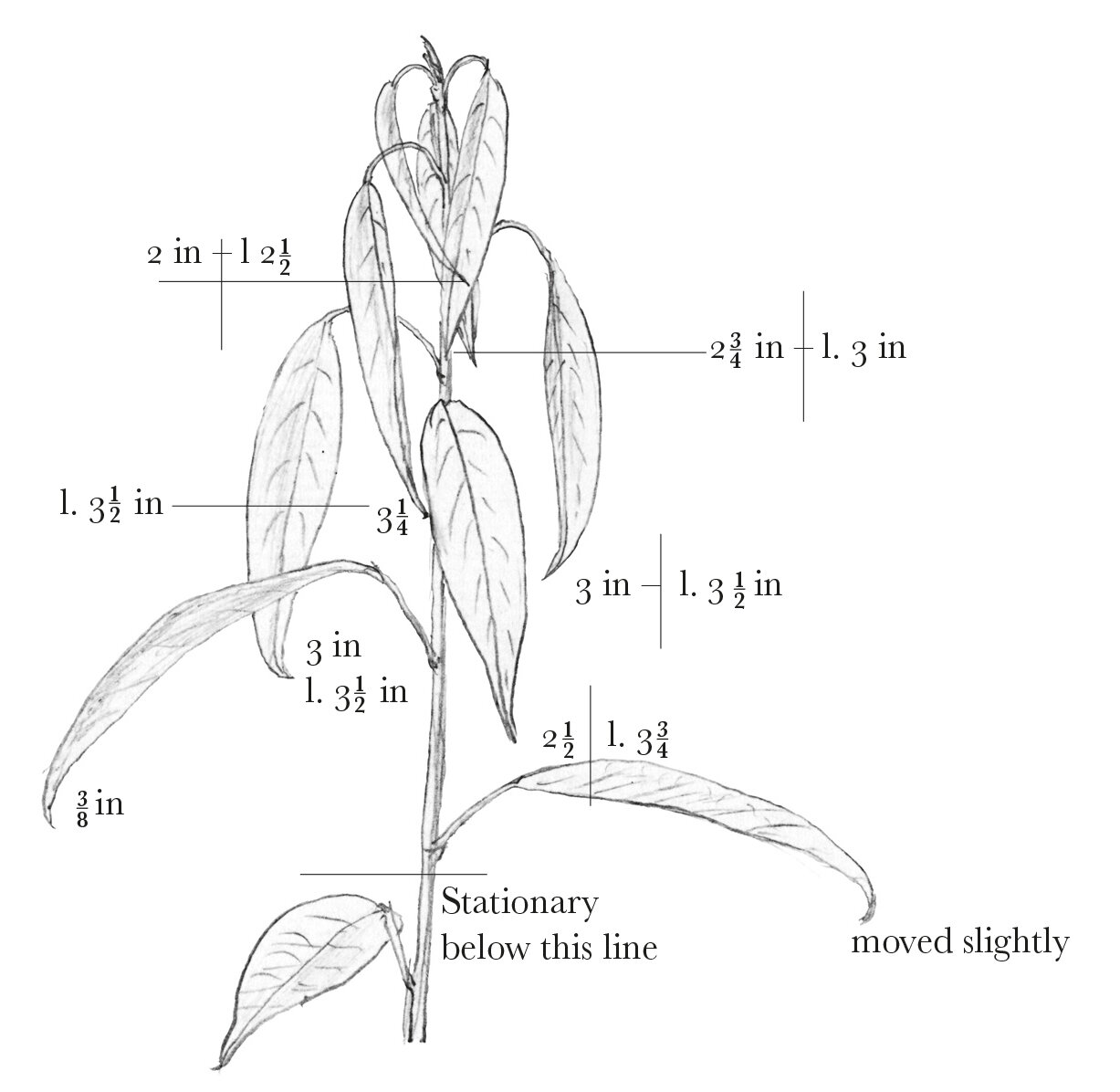From R. I. Lynch [before 14 September 1877]1

Euphorbia jacquiniaeflora reduced
Upper leaves in nocturnal position 9 p.m
Distance between day and night positions of leaf-tips marked in red ink
Length of leaf marked in pencil
Euphorbia jacquiniaeflora
The younger leaves are subject to sleep by curving of petiole more or less throughout its length, so that the leaves are bent down to the stem and even cross it.2 The leaves are raised by straightening of petiole so that the movement is not described from a centre. The height to which the leaves are raised depends on the intensity of light and they appear to be delicately subject to its influence. In the morning the sun shines directly on the plant observed and the leaves are then highest. On one occasion they were deflected considerably by the darkness of heavy rain and this happening in the afternoon they did not afterwards recover position On the branch roughly sketched there are about a dozen leaves below those represented and these do not appear to change position in the slightest degree
CD annotations
Footnotes
Bibliography
Movement in plants: The power of movement in plants. By Charles Darwin. Assisted by Francis Darwin. London: John Murray. 1880.
Summary
Notes the movements of leaves of Euphorbia jacquiniaeflora in response to light intensity.
Letter details
- Letter no.
- DCP-LETT-11415
- From
- Richard Irwin Lynch
- To
- Charles Robert Darwin
- Sent from
- unstated
- Source of text
- DAR 209.14: 30–1
- Physical description
- Amem
Please cite as
Darwin Correspondence Project, “Letter no. 11415,” accessed on


